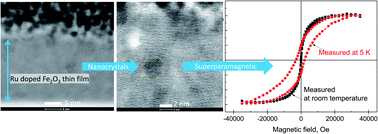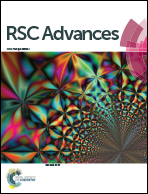Atomic layer deposition of superparamagnetic ruthenium-doped iron oxide thin film
Abstract
Due to the several applications of biosensors, such as magnetic hyperthermia and magnetic resonance imaging, the use of superparamagnetic nanoparticles or thin films for preparing biosensors has increased greatly. We report herein on a strategy to fabricate a nanostructure composed of superparamagnetic thin films. Ruthenium-doped iron oxide thin films were deposited by using atomic layer deposition at 270 and 360 °C. FeCl3 and Ru(EtCp)2 were used as metal precursors and H2O/O2 as the oxygen precursor. Doping with ruthenium helps to lower the formation temperature of hematite (α-Fe2O3). Ruthenium content was changed from 0.42 at% up to 29.7 at%. Ru-doped films had a nano-crystallized structure of hematite with nanocrystal sizes from 4.4 up to 7.8 nm. Magnetization at room temperature was studied in iron oxide and Ru-doped iron oxide films. A new finding is a demonstration that in a Ru-doped iron oxide thin film superparamagnetic behavior of nanocrystalline materials (α-Fe2O3) is observed with the maximum magnetic coercive force Hc of 3 kOe. Increasing Ru content increased crystallite size of hematite and resulted in a lower blocking temperature.



 Please wait while we load your content...
Please wait while we load your content...